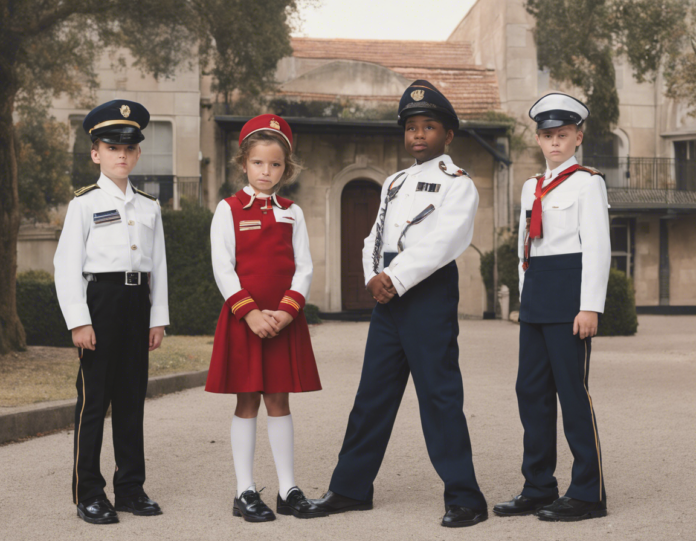When discussing clothing worn by groups of people for a specific purpose, whether it be in the realm of work, school, athletics, or military, two terms often come to mind: uniform and outfit. While these terms are sometimes used interchangeably, there are subtle differences in their meanings and connotations that are worth exploring. In this article, we will delve into the nuances between these terms, providing clarity on when to use each one appropriately.
Uniform vs. Outfit: What’s the Difference?
Uniform
A uniform traditionally refers to a specific set of clothing worn by members of an organization or group to identify themselves and promote a sense of unity. Uniforms are designed to be standardized, with little room for individuality or personal expression. They often include elements such as a specific color scheme, logos, insignias, and sometimes even specific accessories like hats or badges.
Uniforms play a crucial role in various sectors, including:
-
Military: Military uniforms serve to distinguish between different branches of the armed forces, ranks, and roles within the military hierarchy.
-
Schools: School uniforms are worn by students to promote a sense of equality, discipline, and school pride. They also help in identifying students and maintaining a sense of order.
-
Workplace: Many professions, such as police officers, firefighters, airline crews, and healthcare workers, require employees to wear uniforms for identification, safety, and professionalism.
Outfit
On the other hand, an outfit is a more general term that refers to a set of clothes worn together for a particular occasion or purpose. Unlike uniforms, outfits allow for more personal choice and can be customized based on individual preferences, style, and fashion trends. An outfit may vary in color, style, and coordination, depending on the wearer’s preferences.
Outfits are commonly seen in everyday life, including:
-
Casual Wear: Everyday clothing choices fall under the category of outfits. People select outfits based on personal style, comfort, and the occasion.
-
Formal Wear: Elegant events such as weddings, galas, or award ceremonies require specific formal outfits based on the dress code.
-
Sports and Athletics: Sports outfits are designed for functionality, performance, and team identification, such as jerseys and athletic wear.
When to Use Each Term
- Use “Uniform” When Referring To:
- Clothing worn for identification purposes.
- Standardized attire for a specific organization or group.
-
Outfits with a strict dress code and little room for personalization.
-
Use “Outfit” When Referring To:
- Everyday clothing choices that are not standardized.
- Clothing worn for style, comfort, or specific occasions.
- Attire that allows for individuality and personal expression.
Key Points to Remember
- Uniforms are about unity, identification, and standardization.
- Outfits allow for personal choice, style, and expression.
- Uniforms are common in organized groups and institutions, while outfits are part of everyday fashion and clothing choices.
FAQs
1. Can an outfit also be considered a uniform?
While outfits are generally more personalized and varied, in certain contexts, such as some professions or sports teams, a specific set of clothes worn by a group of individuals can also be considered a uniform.
2. Do uniforms have to be the same for everyone?
Uniforms are designed to maintain a standardized look within a group, but variations may exist based on factors like rank, role, or specific functions.
3. How do uniforms differ from dress codes?
Dress codes provide general guidelines on attire expectations, while uniforms are specific sets of clothing designed for a particular group or organization.
4. Can outfits be formal or informal?
Yes, outfits can range from casual everyday wear to formal attire for special occasions based on the context and dress code.
5. Are uniforms mandatory?
In many cases, uniforms are mandatory for specific professions, organizations, or institutions to ensure uniformity, identification, and professionalism.
In conclusion, while uniforms and outfits both involve the concept of wearing clothes, the key distinction lies in their level of standardization and individuality. Understanding when to use each term appropriately can help in conveying the right message in various contexts. Whether it’s adhering to a strict dress code or showcasing personal style, both uniforms and outfits play significant roles in how we present ourselves to the world.

